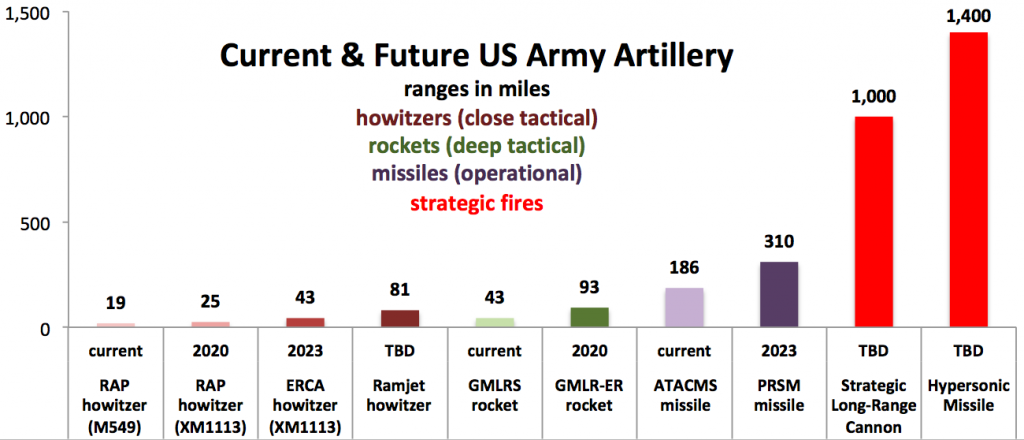By SYDNEY J. FREEDBERG JR.
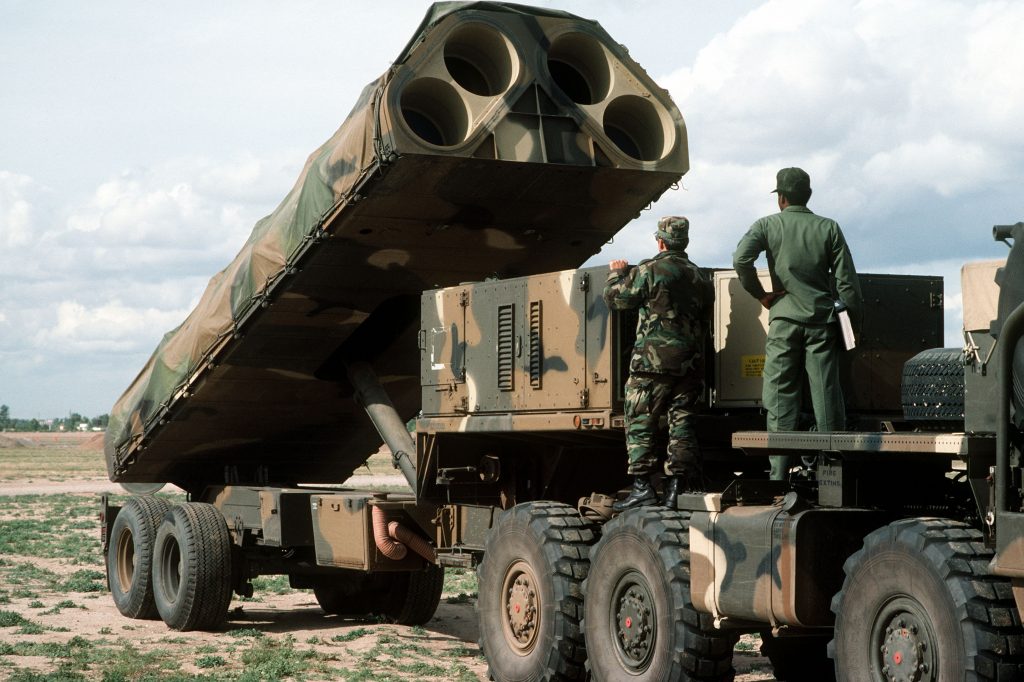 The Air Force’s BGM-109G Ground-Launched Cruise Missile (GLCM) was a Navy BGM-109A Tomahawk modified to give the axe from a Transporter-Erector-Launcher (TEL) truck. WASHINGTON: If President Trump withdraws from Reagan’s INF accord, it could jump-start fielding of novel technologies that would receive got skirted the missive of the alphabet of the treaty, similar ground-launched hypersonics. But it could too Pb to less exotic solutions that the INF pact instantly bans outright, similar mid-ranged ballistic missiles.As the production of a rattling detail 2d inwards the Cold War, the misleadingly namedIntermediate-Range Nuclear Forces accord genuinely bans all cruise too ballistic missiles — . It doesn’t thing whether they comport nuclear warheads or conventional ones — that receive got a gain betwixt 500 to 5,500 kilometers, most 310 to 3,417 miles….but if too entirely they’re launched from the land. The exact same weapon, launched from a ship, submarine, or aircraft is completely legitimate.
The Air Force’s BGM-109G Ground-Launched Cruise Missile (GLCM) was a Navy BGM-109A Tomahawk modified to give the axe from a Transporter-Erector-Launcher (TEL) truck. WASHINGTON: If President Trump withdraws from Reagan’s INF accord, it could jump-start fielding of novel technologies that would receive got skirted the missive of the alphabet of the treaty, similar ground-launched hypersonics. But it could too Pb to less exotic solutions that the INF pact instantly bans outright, similar mid-ranged ballistic missiles.As the production of a rattling detail 2d inwards the Cold War, the misleadingly namedIntermediate-Range Nuclear Forces accord genuinely bans all cruise too ballistic missiles — . It doesn’t thing whether they comport nuclear warheads or conventional ones — that receive got a gain betwixt 500 to 5,500 kilometers, most 310 to 3,417 miles….but if too entirely they’re launched from the land. The exact same weapon, launched from a ship, submarine, or aircraft is completely legitimate. So what could the U.S.A. armed services produce without the treaty that it can’t produce already? H5N1 congressionally mandated Pentagon report from 2013, unpublished but obtained yesteryear Breaking Defense, says that withdrawing from the treaty would create 4 possibilities:
Army Tactical Missile System (ATACMS) launch
“1. Modifications to existing brusk gain or tactical weapon systems to extend range.”
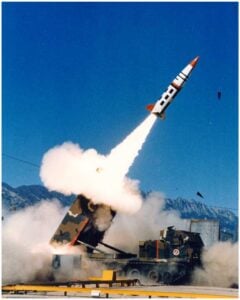 While the U.S.A. has plenty of sea- too air-launched weapons that were never covered yesteryear the treaty, the entirely existing ground-launched organisation that comes some the banned ranges is the Army Tactical Missile System (ATACMS). But the Army’s already decided it’s non worth upgrading the 1980s-vintage ATACMS for a significantly longer range.
While the U.S.A. has plenty of sea- too air-launched weapons that were never covered yesteryear the treaty, the entirely existing ground-launched organisation that comes some the banned ranges is the Army Tactical Missile System (ATACMS). But the Army’s already decided it’s non worth upgrading the 1980s-vintage ATACMS for a significantly longer range. Instead, the Army’s developing an all-new Precision Strike Missile (PRSM) to hitting targets out to 499 km — but officers admit that’s an arbitrary bound imposed yesteryear the INF treaty, non the available technology. So, practically speaking, the terminate of INF would take this restriction on the novel PRSM, but non magically enable a radical enhancement of the aging ATACMS.
Aegis Ashore launch
“2. Forward-based, ground-launched cruise missiles (GLCMs).”
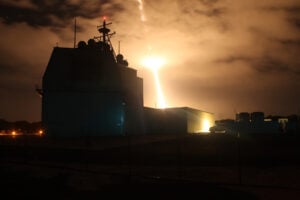 This is the easiest option. In fact, the Air Force’s BGM-109G Ground-Launched Cruise Missile(GLCM) — whose deployment helped forcefulness the Soviets to the negotiating tabular array too whose devastation the INF treaty explicitly ordered — was just a truck-borne variant of the Navy’s touchstone BGM-109A Tomahawk, whose non-nuclear version is on almost every cruiser, destroyer too submarine today.
This is the easiest option. In fact, the Air Force’s BGM-109G Ground-Launched Cruise Missile(GLCM) — whose deployment helped forcefulness the Soviets to the negotiating tabular array too whose devastation the INF treaty explicitly ordered — was just a truck-borne variant of the Navy’s touchstone BGM-109A Tomahawk, whose non-nuclear version is on almost every cruiser, destroyer too submarine today. Repackaging the Tomahawk for the world launch would move fifty-fifty easier instantly than inwards the Cold War. That’s because the U.S.A. is already installing compatible missile tubes inwards Poland too Romania every bit component of the Aegis Ashore missile defence forcefulness system. While the U.S.A. has repeatedly too emphatically denied Aegis Ashore has whatever offensive capability, Russian Federation has repeatedly too anxiously noted that the master copy naval version of Aegis uses the same multi-purpose Mk 41 Vertical Launch System (VLS) to give the axe both defensive (surface to air) too offensive (surface to surface) missiles. Adding offensive capabilities to Aegis Ashore would in all likelihood move every bit uncomplicated every bit loading dissimilar missiles, dissimilar software, too dissimilar targeting data. It would move ironic ifthe Russians’ ain violations of the INF drove the U.S.A. to realize i of their worst fears.
Pershing II ballistic missiles.
“3. Forward-based, ground-launched intermediate-range ballistic missiles (IRBMs).”
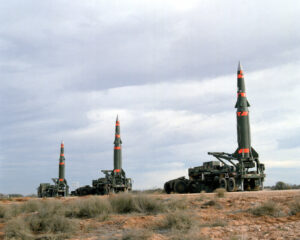 The U.S.A. would receive got to create a novel IRBM, replacing the Cold War Pershing II that was destroyed nether the INF accords, since naught similar is currently inwards service. (The Air Force Minuteman III too Navy Polaris D5 are much longer-ranged “strategic” missiles never covered yesteryear INF). But the basic engineering of ballistic missiles is old, shared non entirely alongside Minuteman too Polaris but alongside Werner von Braun’s 76-year-old V-2. Rocket boosters shoot a “reentry vehicle” (housing the warhead) into infinite at blistering speed, at which betoken it coasts dorsum to world on a parabolic trajectory so predictable Sir Isaac Newton could receive got calculated it alongside a quill pen. (The study of ballistics began alongside gunpowder cannons inwards the Renaissance).
The U.S.A. would receive got to create a novel IRBM, replacing the Cold War Pershing II that was destroyed nether the INF accords, since naught similar is currently inwards service. (The Air Force Minuteman III too Navy Polaris D5 are much longer-ranged “strategic” missiles never covered yesteryear INF). But the basic engineering of ballistic missiles is old, shared non entirely alongside Minuteman too Polaris but alongside Werner von Braun’s 76-year-old V-2. Rocket boosters shoot a “reentry vehicle” (housing the warhead) into infinite at blistering speed, at which betoken it coasts dorsum to world on a parabolic trajectory so predictable Sir Isaac Newton could receive got calculated it alongside a quill pen. (The study of ballistics began alongside gunpowder cannons inwards the Renaissance). In fact, i of the military’s chief motivations for pursuing newer technologies such every bit hypersonics is that they allow less predictable, to a greater extent than maneuverable missiles — ones that could bypass today’s anti-ballistic missile defenses. One of the military’s chief misgivings most the novel technologies, however, is that they’re significantly to a greater extent than complicated than proven ballistic too cruise missile tech.
So what’s the happy medium betwixt novel too proven? That brings us to the final category, the i most which the 2013 written report seems most enthused:
Chinese DF-21 missile launchers
“4. Forward-based, ground-launched intermediate-range missiles alongside trajectory shaping vehicles (TSVs).”
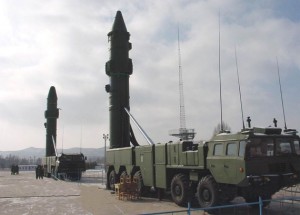 What on world — or rather, inwards infinite — is a TSV? It’s an advanced type of a reentry vehicle, i.e. the component of a ballistic missile that reenters the atmosphere from space, every bit opposed to the rocket boosters, which burn downwards out too autumn away. Specifically, a TSV is launched on a ballistic missile but has “maneuvering too glide capacities,” at to the lowest degree plenty to hone inwards exactly on a target too to avoid a uncomplicated Newtonian calculation predicting its exact flying path.
What on world — or rather, inwards infinite — is a TSV? It’s an advanced type of a reentry vehicle, i.e. the component of a ballistic missile that reenters the atmosphere from space, every bit opposed to the rocket boosters, which burn downwards out too autumn away. Specifically, a TSV is launched on a ballistic missile but has “maneuvering too glide capacities,” at to the lowest degree plenty to hone inwards exactly on a target too to avoid a uncomplicated Newtonian calculation predicting its exact flying path. It combines a ballistic rocket launch — a venerable, proven engineering — alongside a maneuvering reentry vehicle — similar the i allegedly built into the Chinese DF-21 “carrier killer.” It would move to a greater extent than capable than a pure ballistic missile, yet technologically simpler too less risky than hypersonics. This mightiness move the golden hateful for the mid-term, later on deploying a land-based Tomahawk but earlier developing combat-ready hypersonics.
RAP: Rocket Assisted Projectile (current M549A1 or futurity XM1113). ERCA: Extended Range Cannon Artillery. GMLRS-ER: Guided Multiple-Launch Rocket System – Extended-Range. ATACMS: Army Tactical Missile System. PRSM: Precision Strike Missile.
SOURCE: U.S.A. Army. SLRC too Hypersonic Missile ranges every bit reported inwards Army Times.
Army Strategic Fires: Hypersonics & Super-Guns
The Army, Navy, too Air Force are all working on hypersonic weapons, which tin wing through the air at to a greater extent than than v times the speed of sound. (Ballistic missiles genuinely become faster but inwards a fixed arc, too are unable to maneuver similar an plane or cruise missiles). But it’s the U.S.A. Army that runs headlong into the INF treaty, which entirely bans ground-based weapons.
The Army says it tin move on alongside its planned “strategic fires” systems whatever happens to INF, because they volition comply alongside the treaty — somehow. What the Army won’t utter over is how that’s fifty-fifty possible for weapons it says volition receive got a thousand-mile range.
M109A7 Paladin PIM self-propelled howitzer
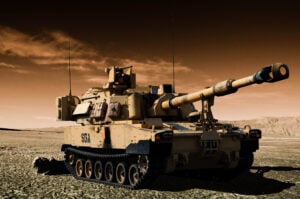 We can, however, engage inwards some informed speculation based on what the Army has disclosed. The two strategic fires systems are intended to complement each other:
We can, however, engage inwards some informed speculation based on what the Army has disclosed. The two strategic fires systems are intended to complement each other: One, non yet named inwards public, is a ground-launched hypersonic missile — high speed, high performance, too high toll — to strike the hardest targets, such every bit hole-and-corner ascendance bunkers.
The other, the Strategic Long-Range Cannon (SLRC), uses a scaled-up howitzer to launch slower too cheaper missiles at easier but to a greater extent than numerous targets — radars, missile launchers, mobile ascendance posts. Once inwards flight, the munition too then ignites a pocket-size built-in rocket booster to extend its range, a scaled-up version of 30-year-old Rocket Assisted Projectile (RAP) technology. The cannon-plus-small-rocket combination should move cheaper than a pure rocket, because the cannon component is reusable too rocket boosters aren’t.
Hypersonic weapon (Raytheon concept)
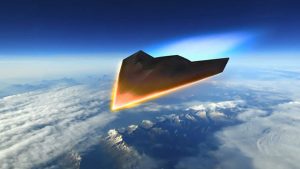 It’s clear that neither of these weapons fits the INF treaty’s Definition of a ballistic missile every bit “a missile that has a ballistic trajectory over most of its flying path.” The Army’s proposed cannon-launched projectile flies ballistically at first, but it departs from that trajectory every bit before long every bit the rocket booster kicks in. H5N1 hypersonic “boost-glide” organisation initially flies similar an aircraft, nether its ain powerfulness too then, when the engine cuts out, flies similar a glider (a very, very, rattling fast glider), which — every bit the Obama direction argued during New START talks — is definitely non ballistic flight.
It’s clear that neither of these weapons fits the INF treaty’s Definition of a ballistic missile every bit “a missile that has a ballistic trajectory over most of its flying path.” The Army’s proposed cannon-launched projectile flies ballistically at first, but it departs from that trajectory every bit before long every bit the rocket booster kicks in. H5N1 hypersonic “boost-glide” organisation initially flies similar an aircraft, nether its ain powerfulness too then, when the engine cuts out, flies similar a glider (a very, very, rattling fast glider), which — every bit the Obama direction argued during New START talks — is definitely non ballistic flight. It’s too possible that neither weapon would run across the INF treaty’s Definition of a cruise missile, “an unmanned, self-propelled vehicle that sustains flying through the utilization of aerodynamic elevator over most of its flying path.” The hypersonic missile is in all likelihood a “boost-glide” organisation designed to skip inwards too out of the upper atmosphere similar a skipping stone over a pond, which is using neither a ballistic trajectory or aerodynamic lift. The cannon-launched weapon, every bit discussed above, alternates betwixt ballistic too rocket-boosted flight: It’s conceivable it doesn’t pass “most of its flying path” (i.e. to a greater extent than than 50 percent) purely inwards either fashion too hence arguably qualifies neither every bit ballistic nor cruise.
A U.S.A. Army diagram of the Nazi V2 rocket, the world’s rootage operational ballistic missile.
Back To (Ballistic) Basics?
In whatever case, the hair-splitting technical arguments that the Army’s proposed weapons won’t violate the INF treaty may move moot inwards ii ways. First, the Russians volition never receive got them. Moscow already argues that long-range armed drones — a major U.S.A. wages — violate the treaty ban on whatever “unmanned, self-propelled vehicle that sustains flying through the utilization of aerodynamic lift.” Such a wide Definition of the treaty won’t exit whatever loopholes for the Army weapons to wing through.
Pershing II missile
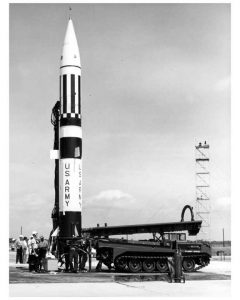 Second, the U.S.A. armed services may create upwards one's hear it doesn’t ask them. If the U.S.A. does withdraw from the INF treaty, too then it doesn’t receive got to worry most whatever ban on straightforward ballistic or cruise missiles, too those are proven technologies that mightiness move easier to create than hypersonics or cannon-launched missiles. The 2013 study specifically casts shade on hypersonics inwards i passage:
Second, the U.S.A. armed services may create upwards one's hear it doesn’t ask them. If the U.S.A. does withdraw from the INF treaty, too then it doesn’t receive got to worry most whatever ban on straightforward ballistic or cruise missiles, too those are proven technologies that mightiness move easier to create than hypersonics or cannon-launched missiles. The 2013 study specifically casts shade on hypersonics inwards i passage: “Due to electrical flow INF prohibitions, specifically the Definition of a ballistic missile, the Department is pursuing engineering evolution concepts using boost-glide vehicles to gain a greater than 50 per centum non-ballistic flying profile. Without INF, the substitution produce goodness would move the powerfulness to champaign a ground-launched ballistic system, such every bit an IRBM alongside a TSV. This type of organisation could deliver the same or ameliorate capability every bit a boost-glide vehicle, alongside potentially less technological adventure too cost.”
By contrast, the 2013 study sounds unenthusiastic most a traditional ballistic missile:
“Despite high re-entry velocities, a weapon organisation alongside a purely ballistic trajectory could move susceptible to modem missile defence forcefulness systems too lack the precision required to effectively strike targets alongside conventional munitions due to in-flight guidance errors.”
A ballistically-launched, trajectory-shaping missile would move harder to shoot downwards than a pure ballistic weapon, but easier to prepare than a pure hypersonic weapon. It would be, every bit the written report says, just “an evolution of an IRBM” rather than radically novel technology. Even if the U.S.A. ultimately decides to pursue hypersonics too super-cannon, the IRBM-plus-TSV combination could in all likelihood move fielded first. While the warhead/reentry vehicle would move to a greater extent than complex than anything from the 1980s, such a weapon would expect a lot similar a reborn Pershing II.
Buat lebih berguna, kongsi:
